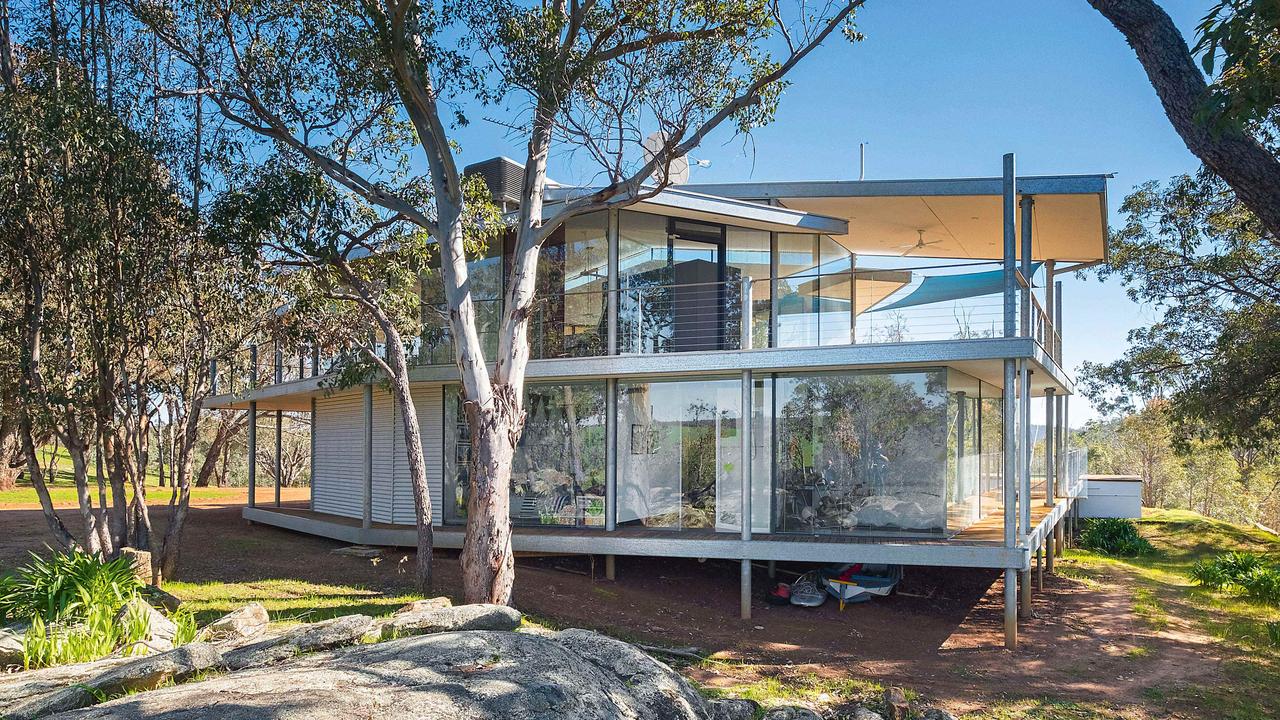‘This is the future of farming’
In the South Australian desert, this solar-powered facility grows tomatoes for the nation.
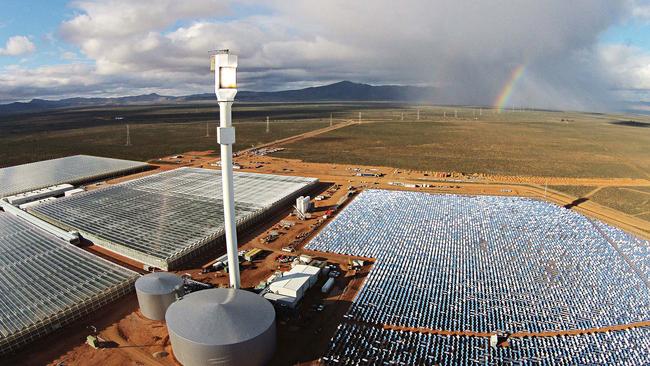
Driving across the wide saltbush plains towards Port Augusta, north of Adelaide, the first thing a visitor notices on the horizon is the sky-piercing solar tower of Sundrop Farms. Only when you get close do you see the 24,000 mirrors arrayed at its base, each of them beaming the sun's rays to the tower's tip, 127m above the ground. The thermal energy harnessed here powers 20ha of adjoining glasshouses, which in turn produce about 350 tonnes of tomatoes each week.
Welcome to farming of the future: a hi-tech, capital-intensive system growing food sustainably and cleanly for the masses - all located in rocky, arid country where southeast Australia's cropping zones meet the Outback and annual rainfall is less than 250mm. "If you can farm successfully here, you can farm almost anywhere in the world," says CEO Philipp Saumweber, who began his career at Goldman Sachs, and comes from a wealthy German family that co-funded Sundrop Farms' development. "I'm no eco-warrior but I wanted to create a new business model for farming, based on a concept of doing more with less and growing in the most sustainable or restorative manner. This is what we have achieved."
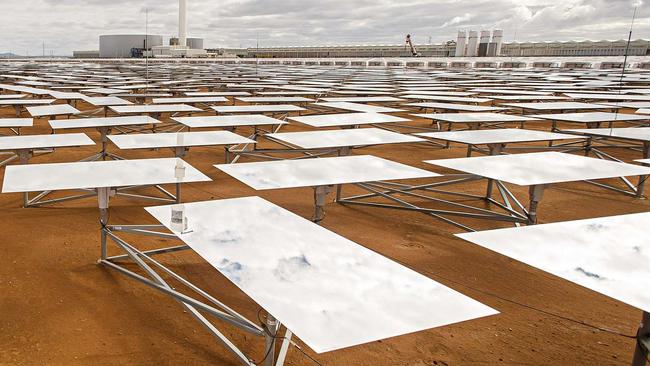
Saumweber's project - born seven years ago in a small nearby glasshouse, where it ran on homemade solar panels, backyard hydroponics and big dreams - is now a $175 million, highly productive "farm" that opened in June and is now producing 10-15 per cent of Australia's truss tomatoes. It runs almost entirely on solar thermal power, courtesy of the 15ha array of mirrors that feeds the tower with heat energy, rather than using the more common photovoltaic light-converting panels.
The energy is used to heat seawater in vast boilers, generating electricity from the resulting steam and thermal heating for the hothouses. The steam-generated power drives a large desalination plant, turning constantly circulating seawater from the nearby Spencer Gulf into fresh water. In the glasshouses, 750,000 tomato plants dangle their roots into hydroponic pipes.
"When you look at how many resources modern conventional agriculture uses now - rivers, fresh water, fossil fuels, chemicals, land - it is not sustainable, and our family didn't want to continue to fund or encourage that," Saumweber says.
"We looked all around the world for where to start our Sundrop model and Australia was ideal - it was coming out of drought and there was a keen interest in water-saving farming." In addition, "most produce here was still grown in the field so [the industry] was open to new concepts; the climate was ideal and you had good universities and technology knowledge." Standing in one of Sundrop's vast glasshouses, surrounded by a forest of Merlice tomato vines laden with ripening fruit and climbing towards the sun in 200m-long rows, Saumweber says he has to pinch himself to believe his vision has become reality.
The glasshouses are hubs of quiet activity: small, driverless electric trains trailing carts laden with red tomatoes glide around, delivering the harvest through automatic doors to the packing shed. Ladders slide along each row, with workers plucking off the ripe fruit twice a week and others manually pollinating the emerging flowers on the vines every two days. The farm employs 150 workers from Port Augusta and nearby Port Pirie, including many long-term unemployed or those displaced by the mining downturn.
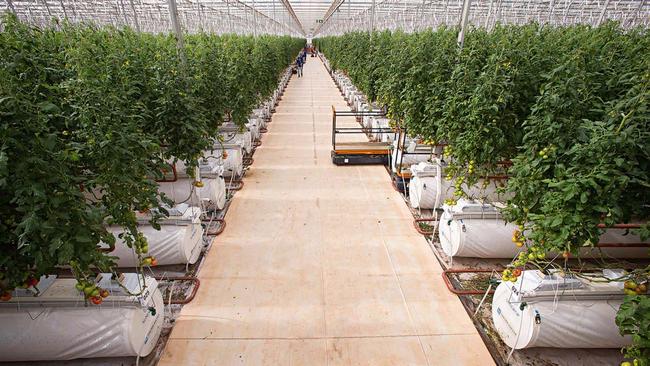
The air inside is balmy on this wintry outback day, thanks to the thermal heating, which helps the fruit ripen naturally on the vine. In summer, when temperatures outside can hit 47ºC, the glasshouses are climate-controlled with evaporative cooling and sliding shadecloths.
No artificial gases are used to redden or ripen the tomatoes. But in another hi-tech innovation, carbon dioxide levels are elevated in the glasshouses to boost crop production by about 30 per cent. Head grower Adrian Simkins says no pesticides are used; instead, friendly or beneficial bugs such as ladybirds are encouraged, and traps and pheromones are used to suppress unwanted insects. Pest and bug problems are minimal, in any case, due to the farm's isolation.
The intensity of Port Augusta's light and the controlled growing environment mean tomatoes can be picked just 10 weeks after each seedling is embedded in its hydroponic pipe. New seedlings are planted between mature vines, giving Sundrop a unique production cycle spanning 50 weeks a year - crucial for supplying Coles supermarkets with up to 25,000 tonnes of tomatoes each year.
"It sounds like high-cost farming but because of our scale and low running costs we can actually grow tomatoes incredibly competitively," Saumweber says. "You have to put in a lot more capital up-front to build it but we don't have to buy water, electricity, fuel or insecticides, our land is cheap and our annual costs of running a big horticultural operation are very low." Investors and retailers have been quick to see the merits of Sundrop Farms' methods and the potential to expand the model globally. In 2014, private equity firm Kohlberg Kravis Roberts helped to fund construction of the SA flagship facility when it injected more than $US100 million into a partnership with the Germany-based Saumweber family. It recently kick-started trials to build similar solar-powered glasshouses in Portugal and the United States.
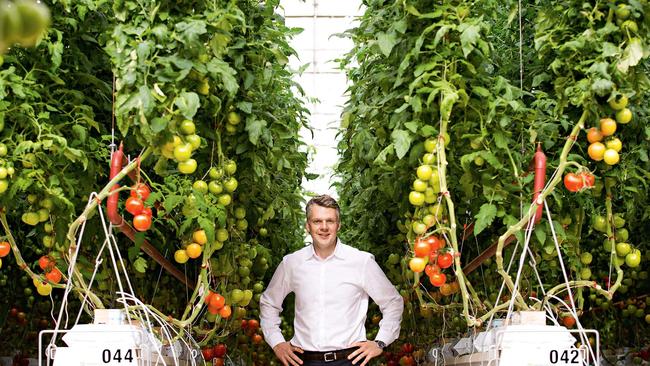
And while the first 10 years are dedicated to producing truss tomatoes for Coles - six double container truckloads leave the Port Augusta farm each day, bound for distribution centres in Perth, Darwin, Adelaide, Melbourne, Sydney and Brisbane - the glasshouses could easily grow other tomato varieties and vegetables such as capsicums or cucumbers.
"This is the future," says Saumweber. "Just as the green revolution of the'70s gave us bigger tractors, more seed varieties and better irrigation, I think the next giant leap forward in food production will be the sustainable intensification of farming - doing more with less inputs but on a bigger scale and with greater efficiency.
"It's already here - we are up and running - but I think we will now see a lot more innovation in agriculture generally, and not just because we have to feed more people in Asia. Millennials care about how they eat, what they are eating and how it is produced and grown; inevitably the farming status quo will be challenged. What we are doing here is just the start of a much bigger trend towards a new way of producing food."

